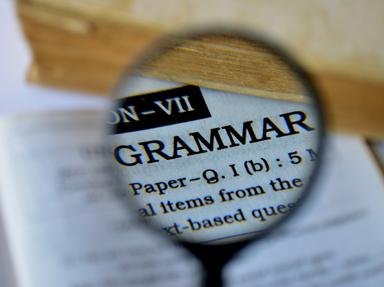Quiz Answer Key and Fun Facts
1. For those who are learning English as a second language, a purely prescriptive grammar approach can be frustrating.
2. Traditionally, English grammatical study has relied heavily upon description and very little upon prescription.
3. Standard English usage is what is considered "acceptable" and "proper" when speaking or writing. In which type of communication would you expect to NOT encounter standard usage?
4. Which word best completes the quotation? "People who aspire to use standard English benefit from being aware of points in both ______________ and descriptive grammars of English" (T. Odlin).
5. Which song lyric does not violate the rules of a typical prescriptive grammar?
6. Which of the following should NOT be used to describe the philosophy of the descriptive grammarian?
7. Although the contraction "ain't" is shunned by prescriptive grammarians today, in previous centuries, it was widely used in England and America and was not then considered to be part of the lexicon of the ill-educated.
8. Which expression actually contains a common misspelling and would likely alarm the purely prescriptive grammarian?
9. A descriptive grammar has no rules.
10. Which would NOT be a prescriptive grammar rule?
Source: Author
Treenage
This quiz was reviewed by FunTrivia editor
looney_tunes before going online.
Any errors found in FunTrivia content are routinely corrected through our feedback system.
